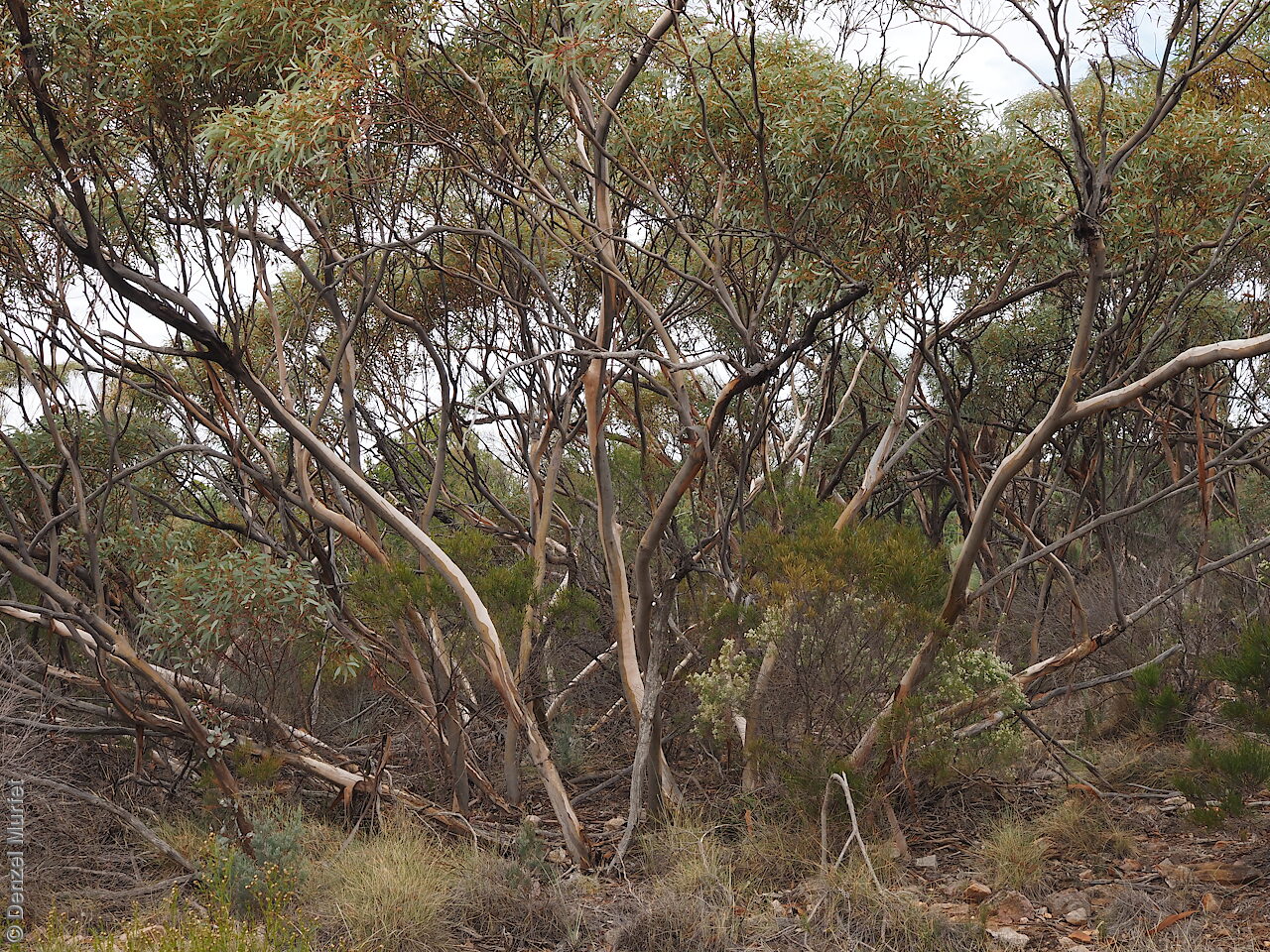
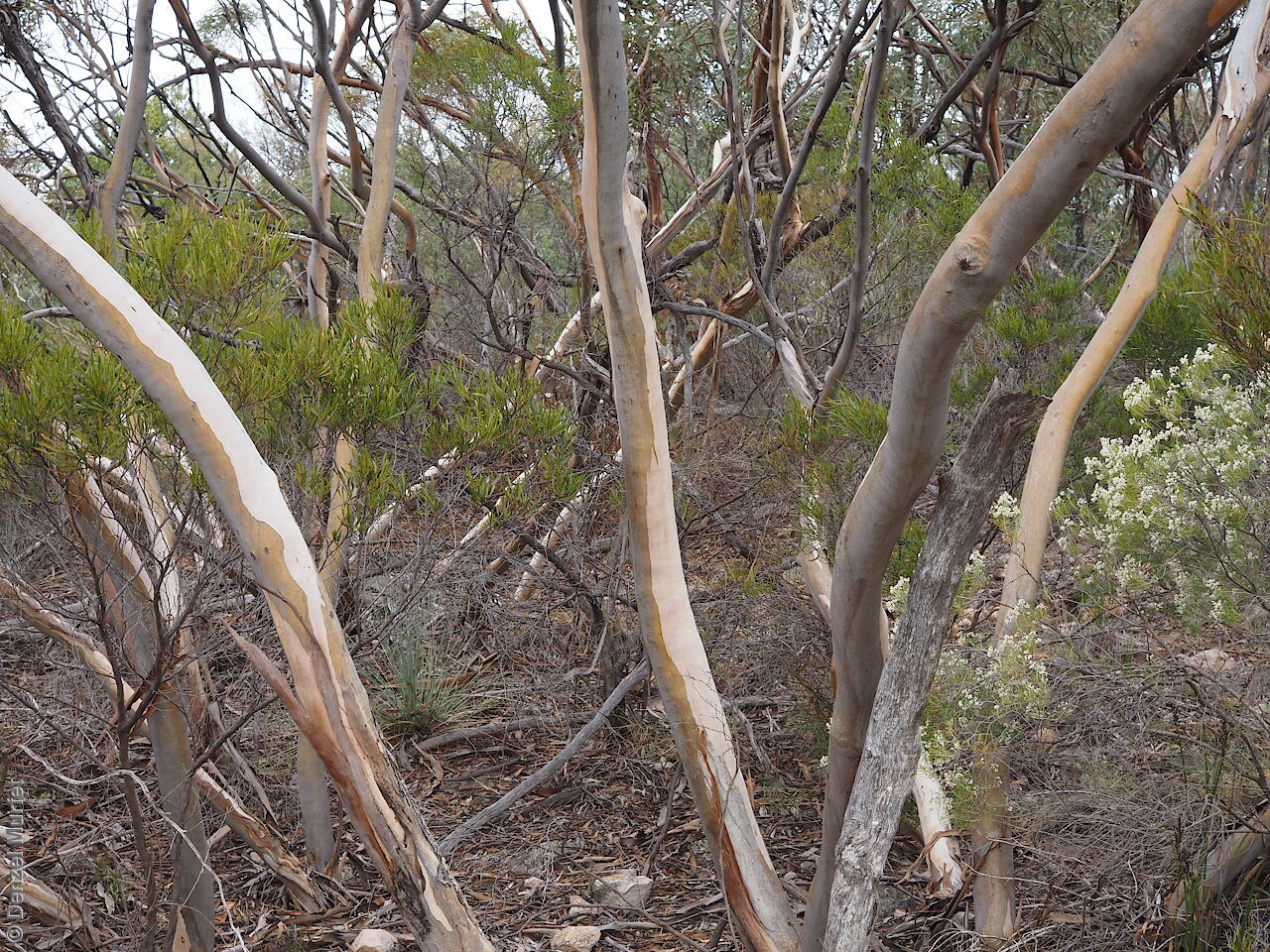
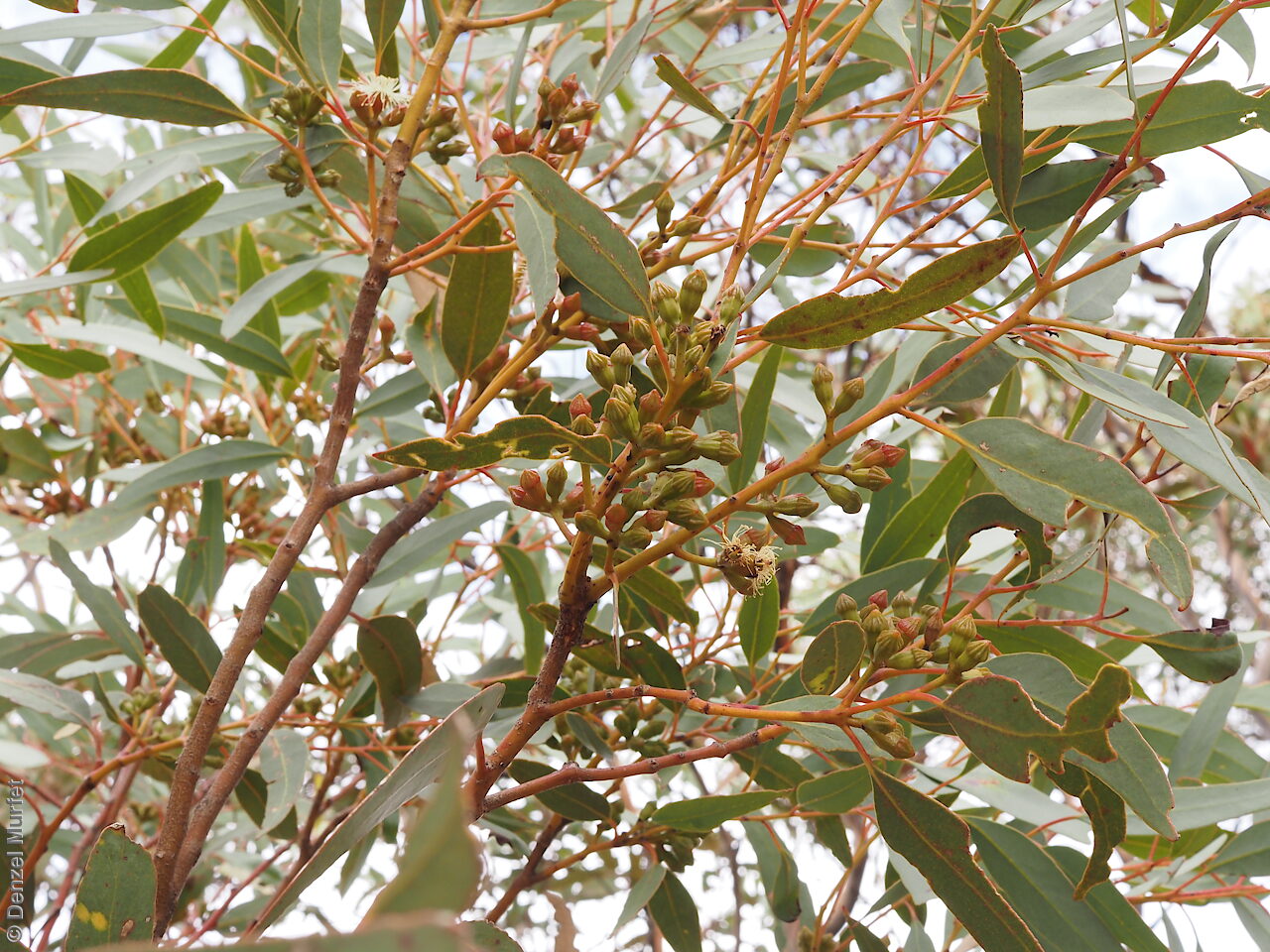
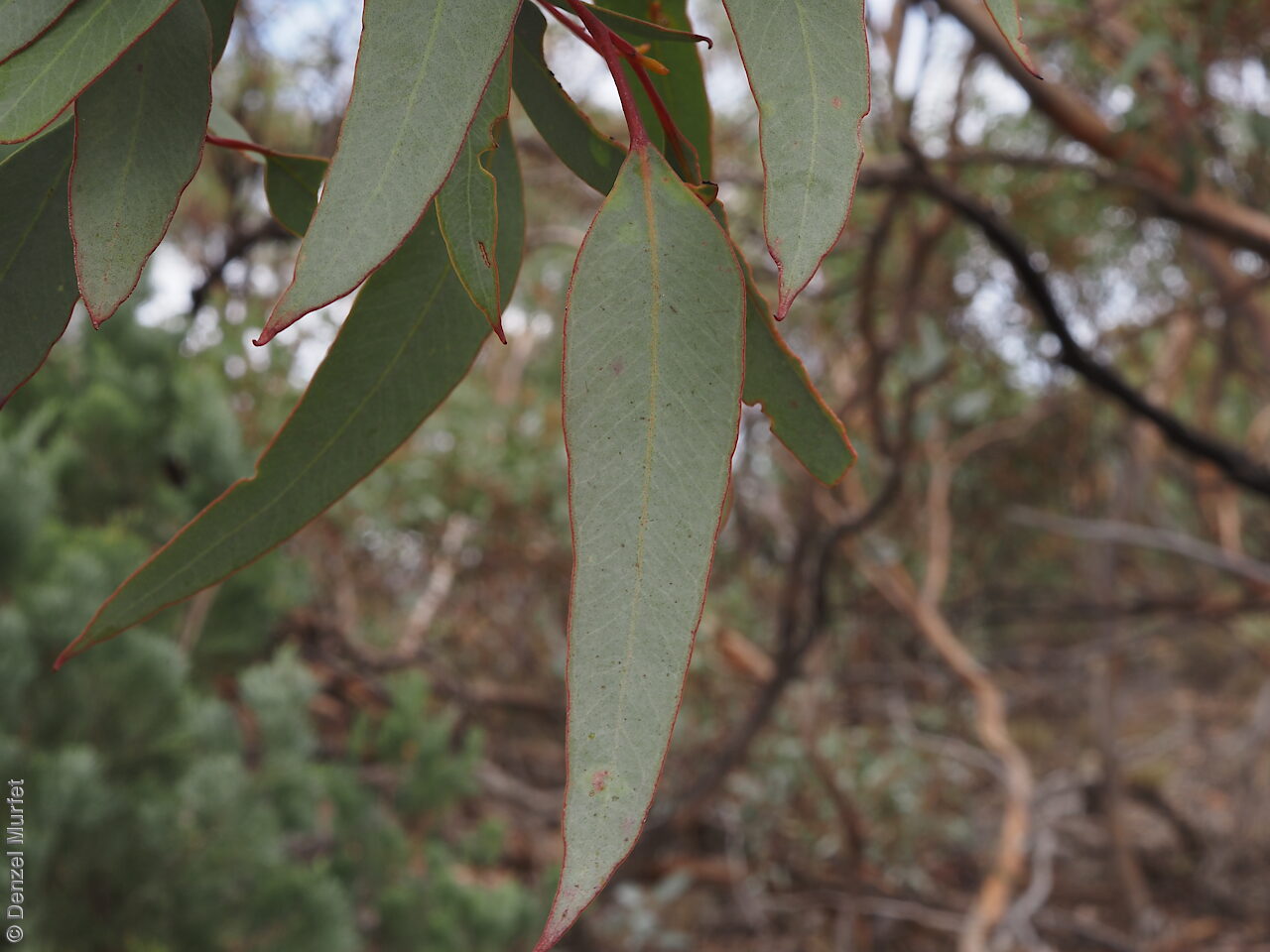
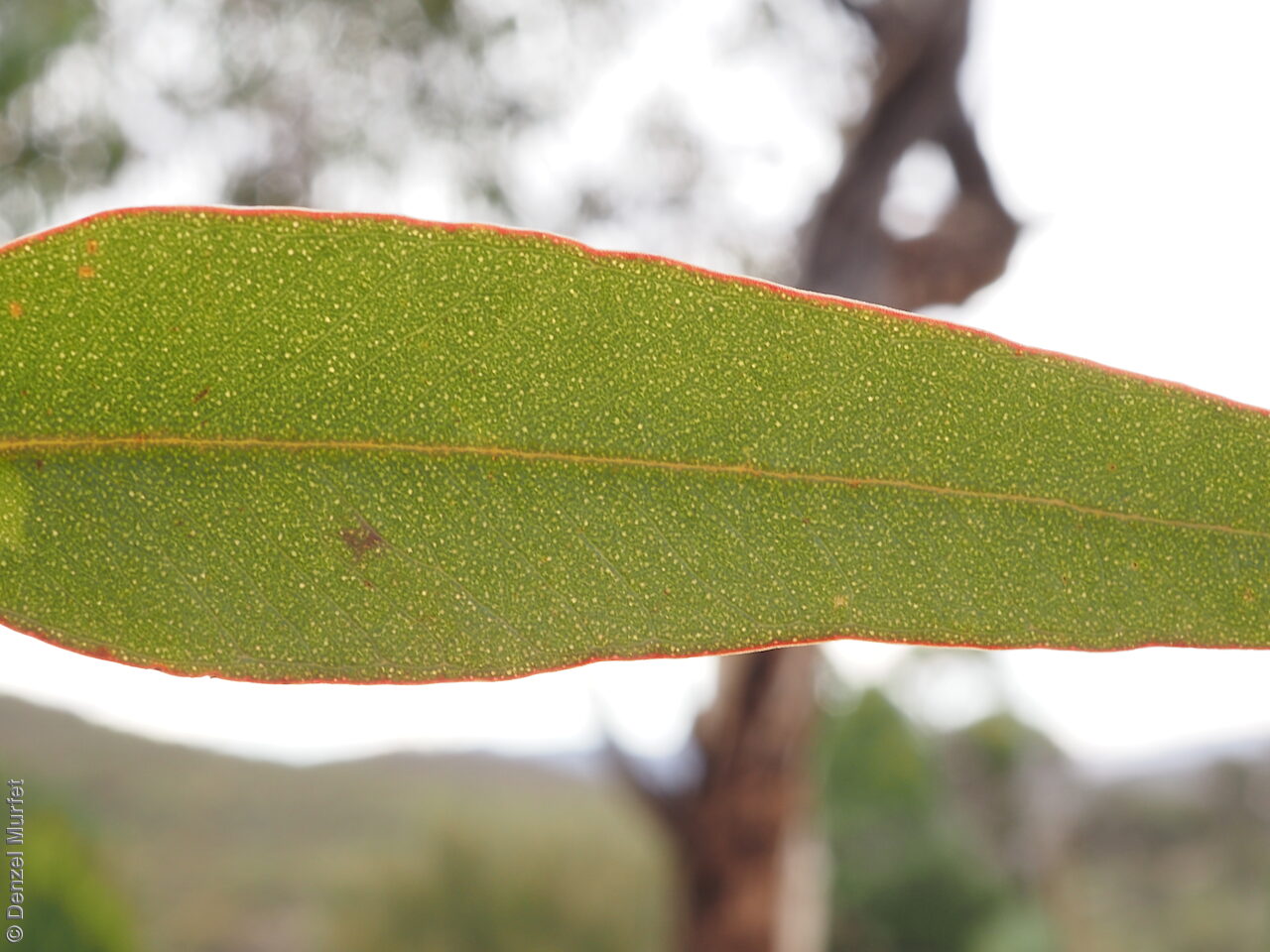
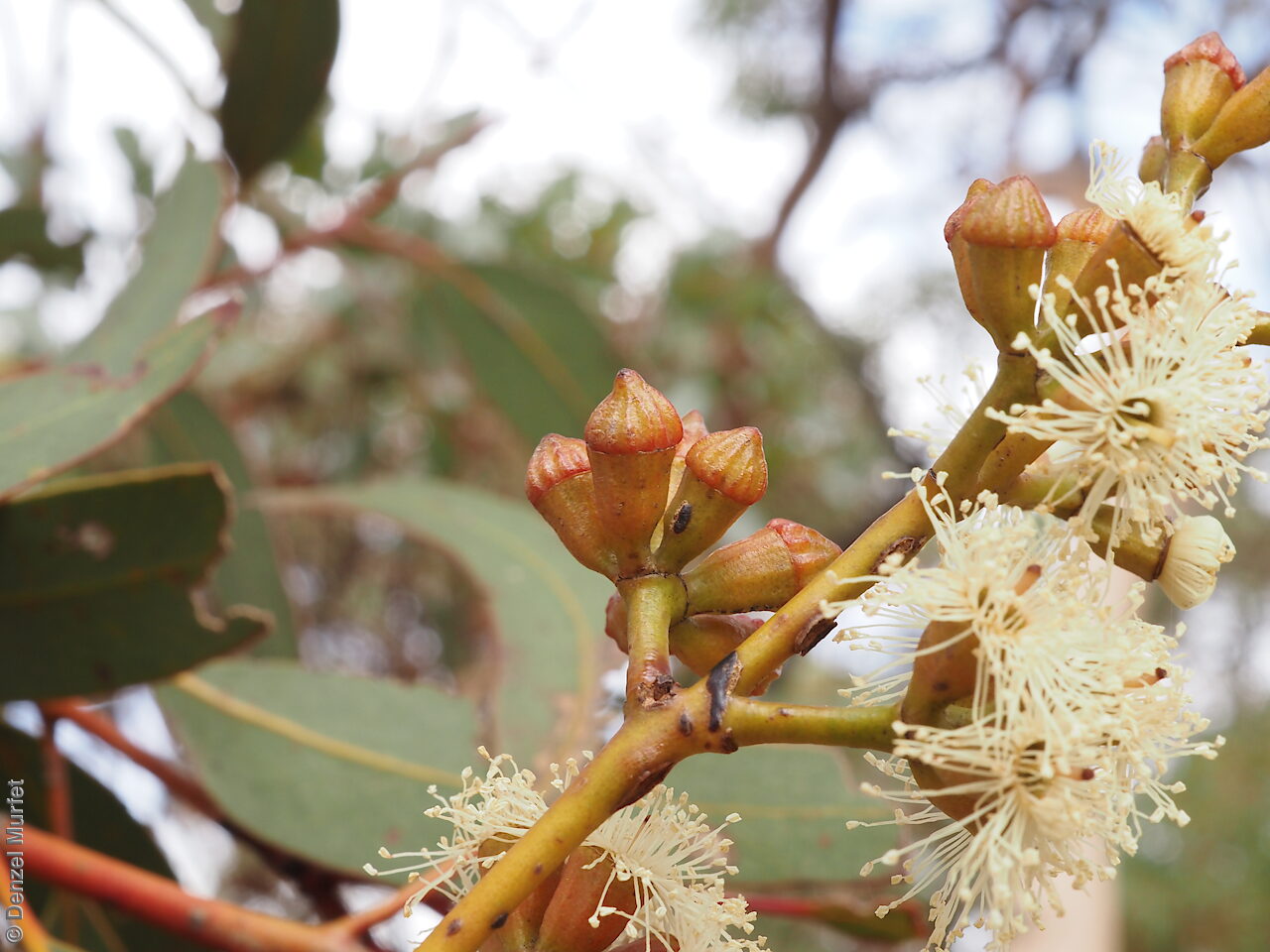
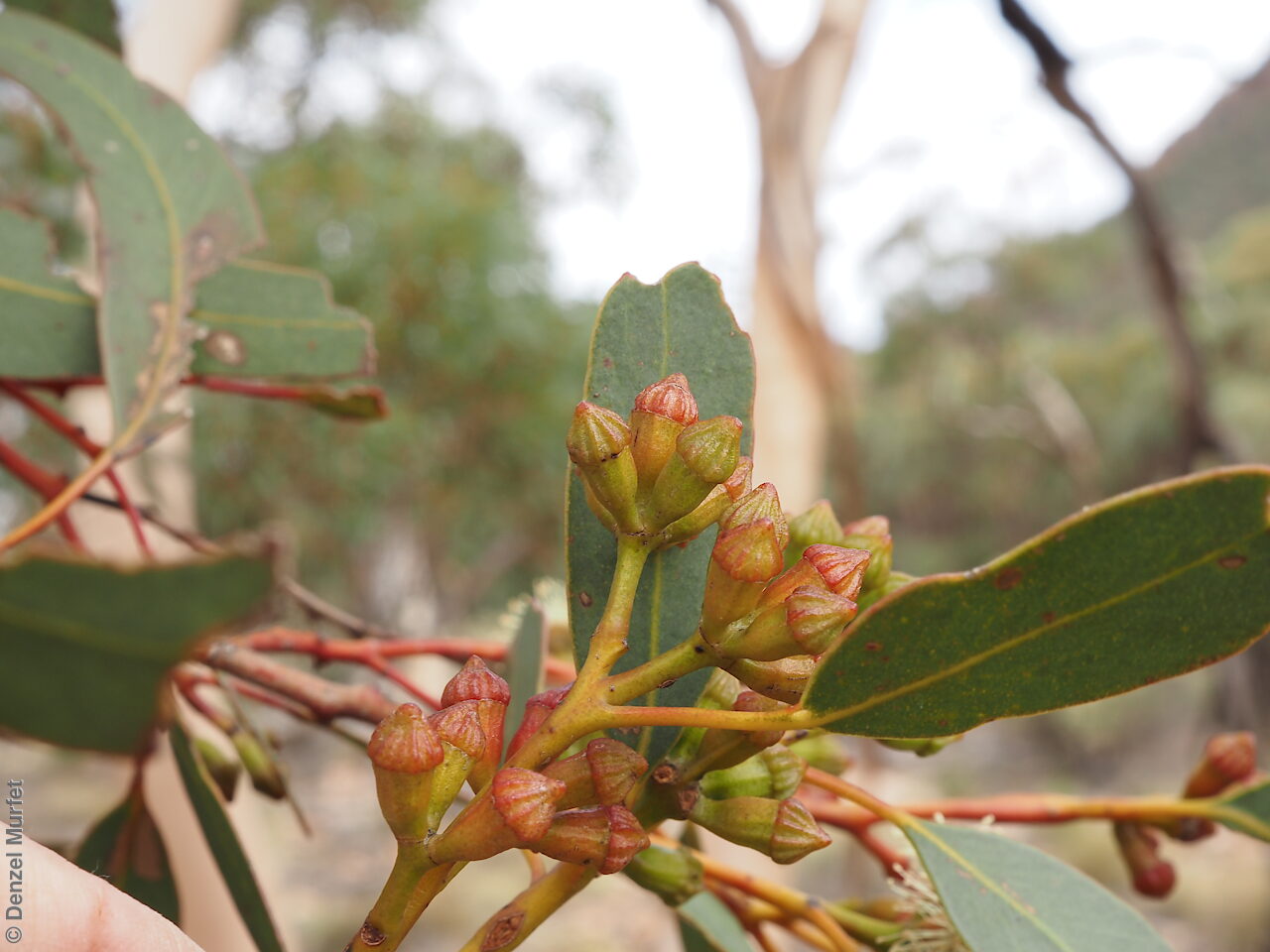
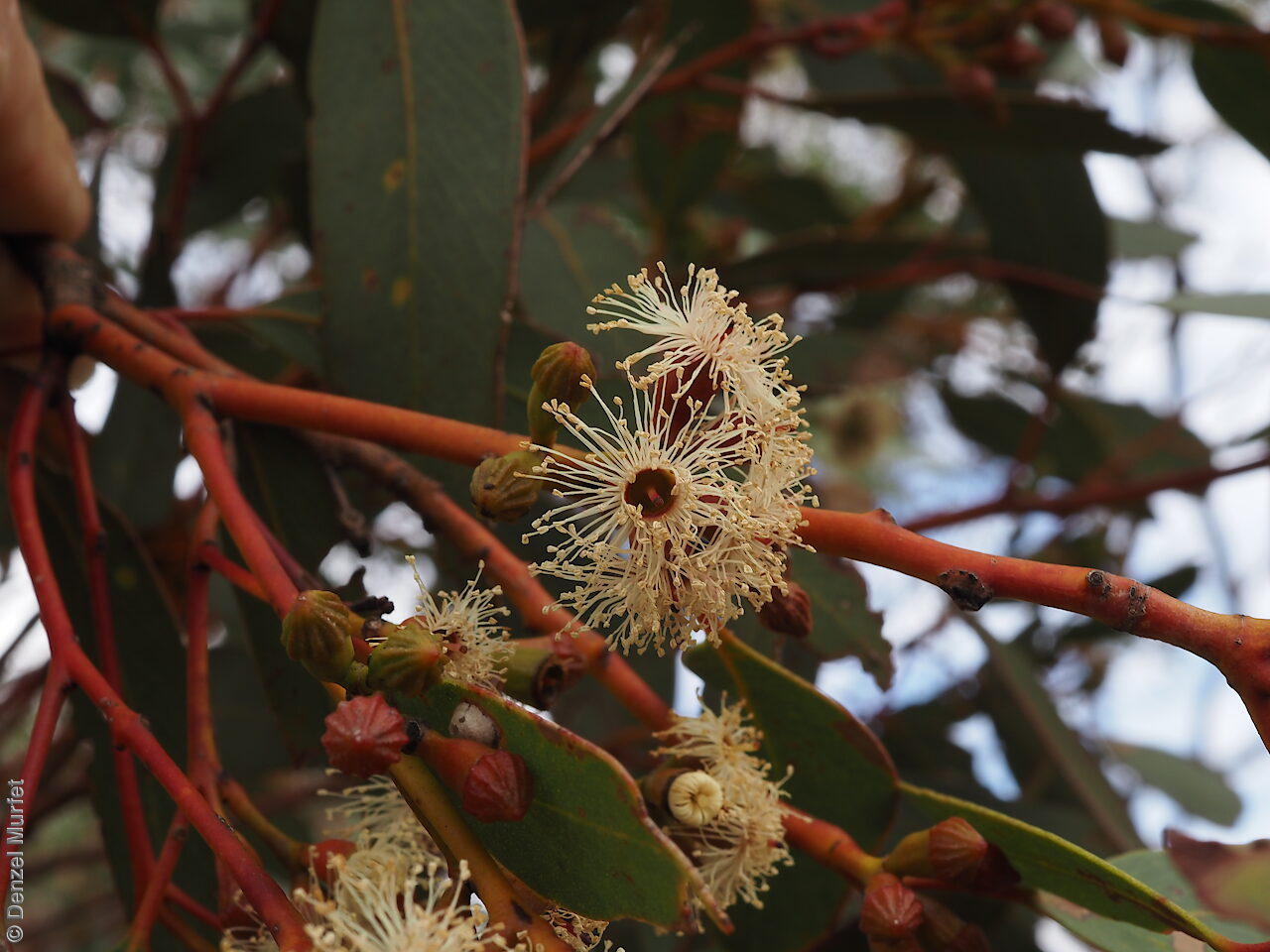
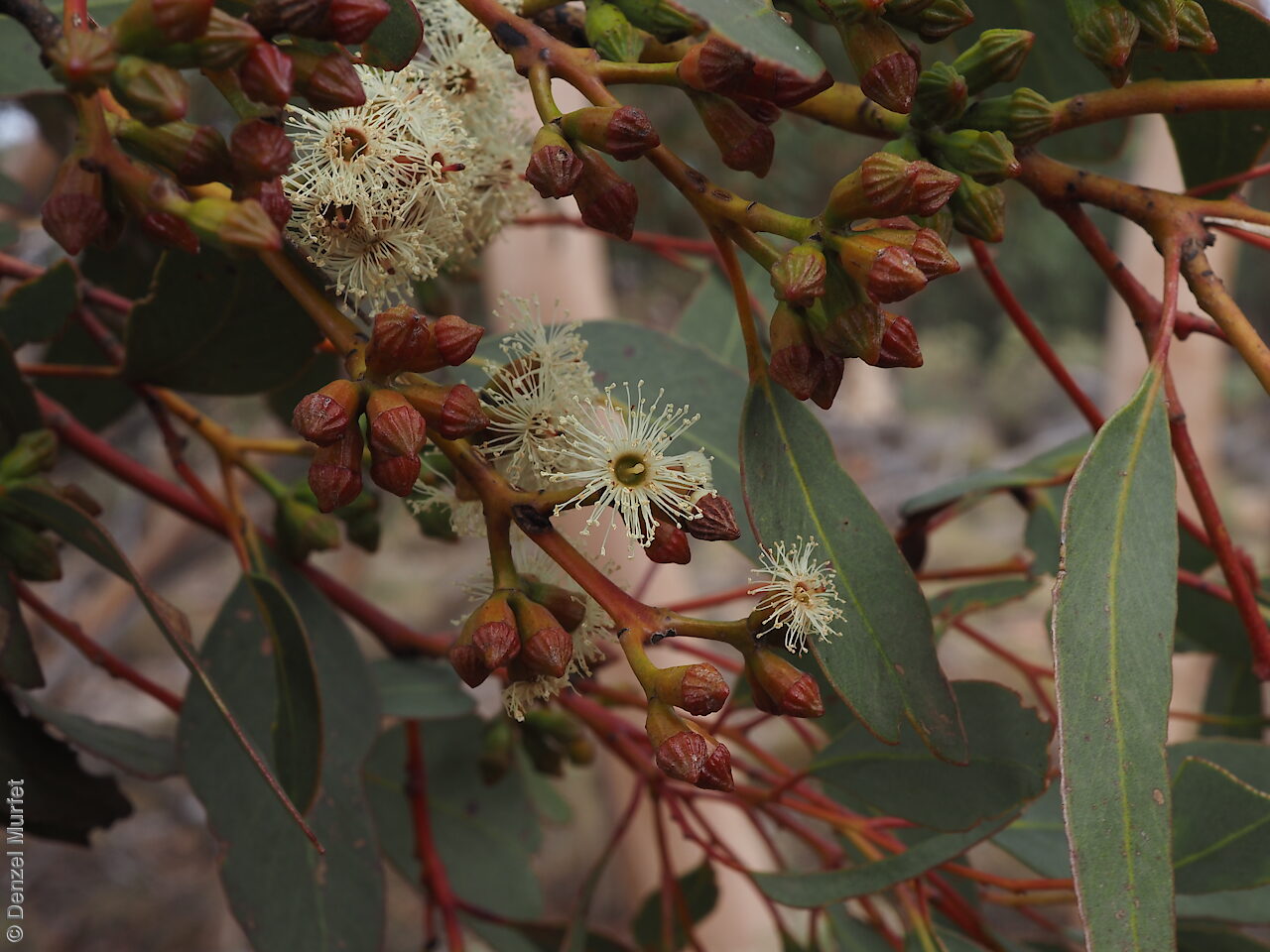
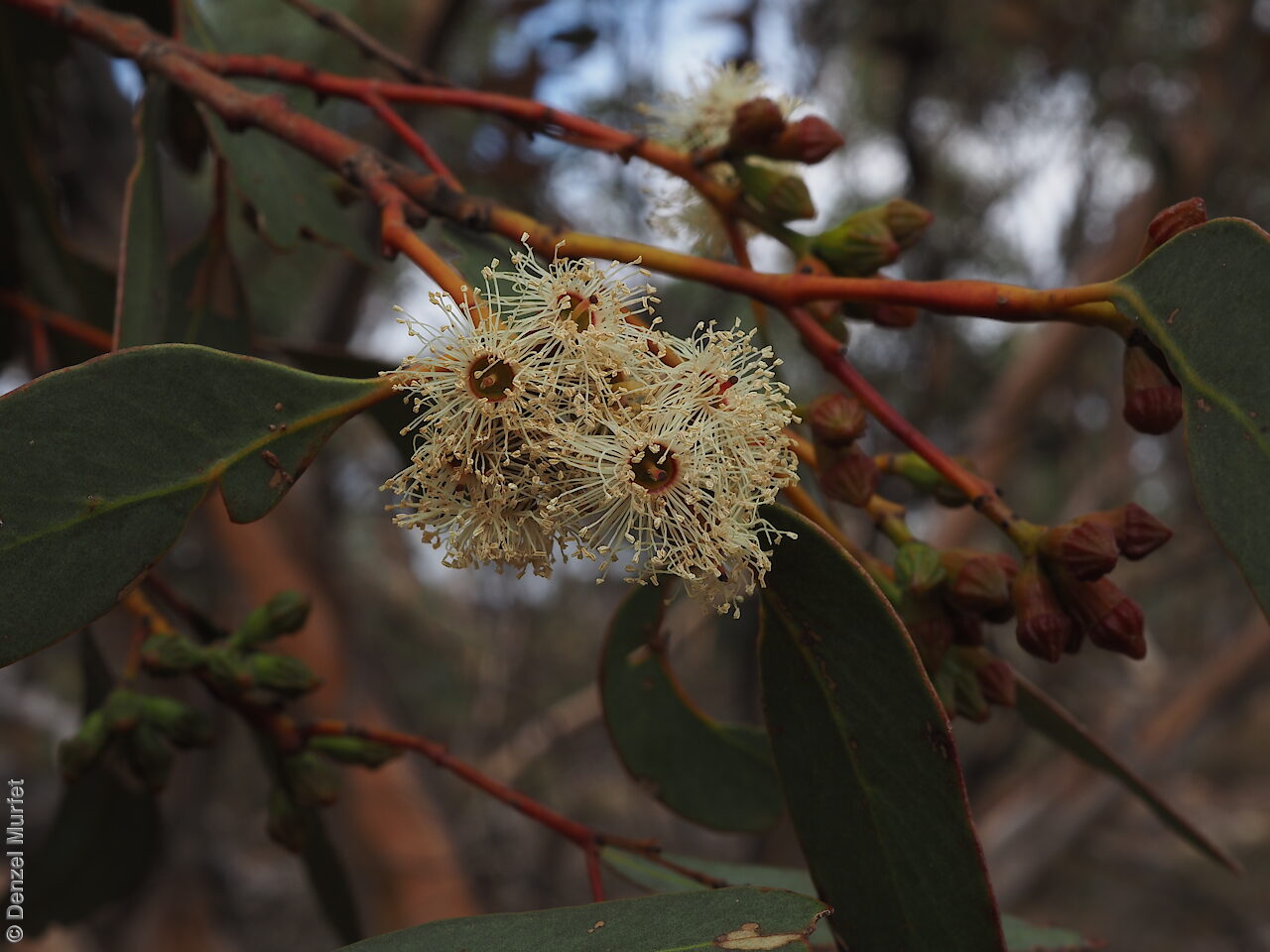
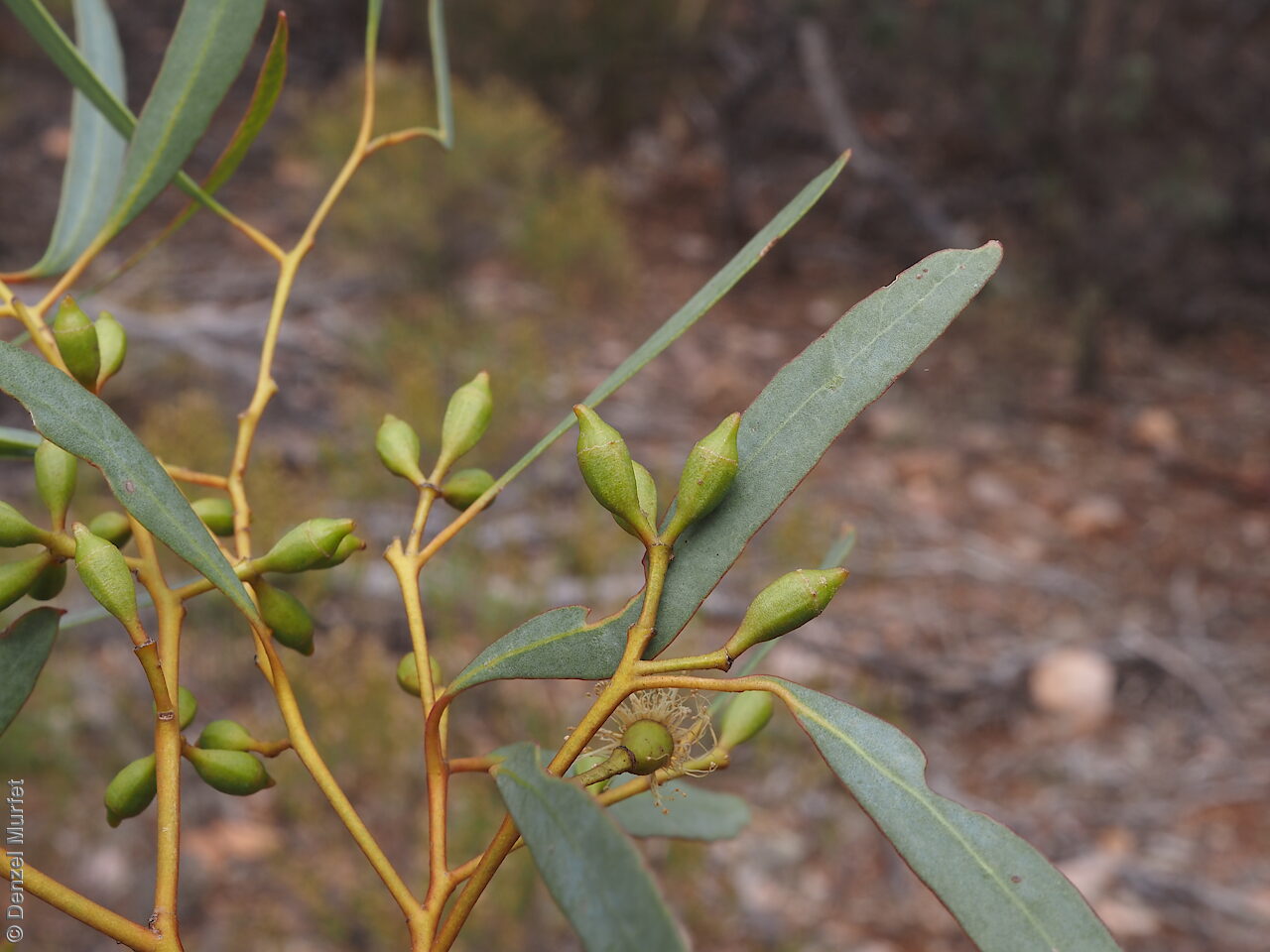
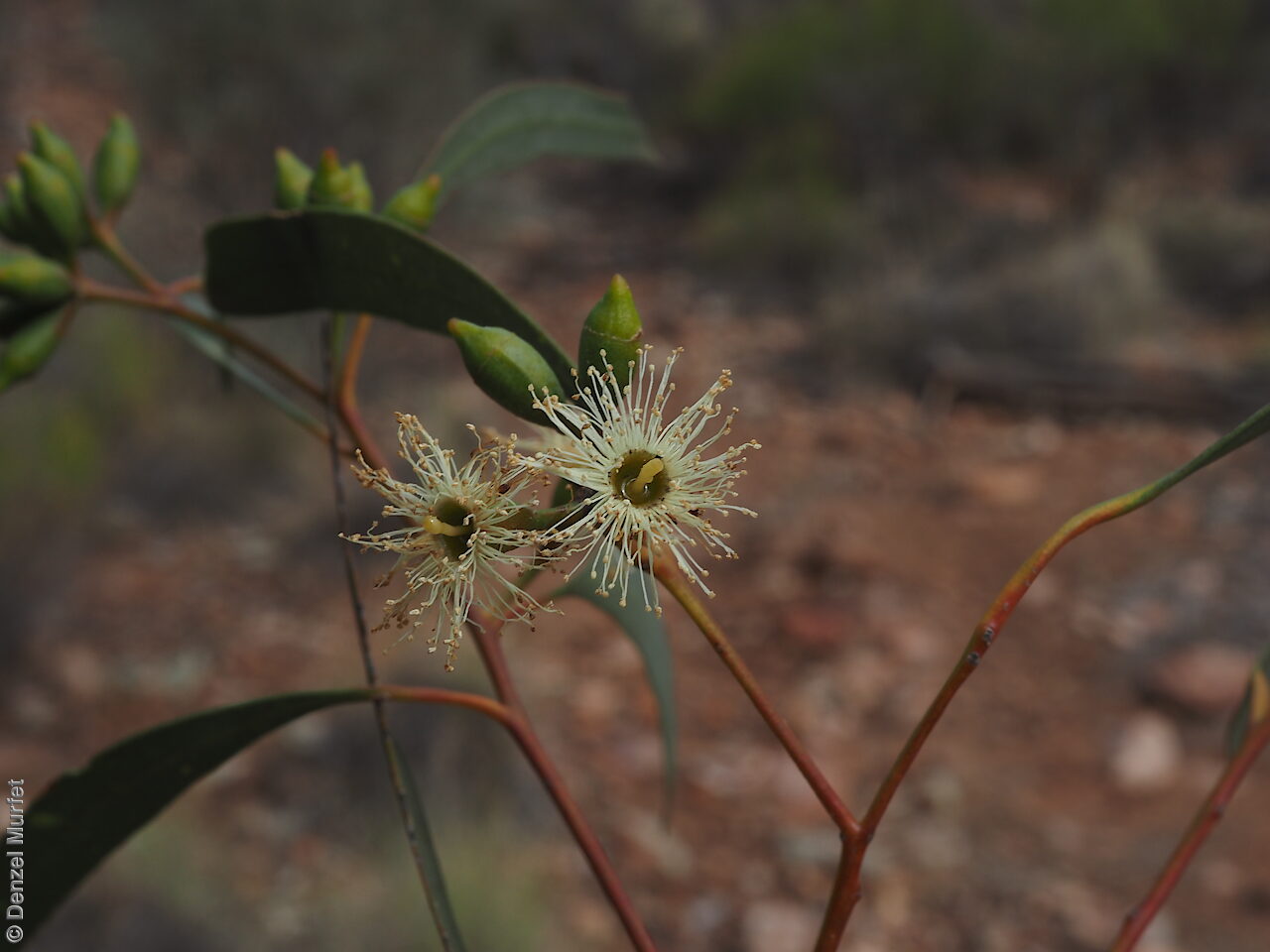
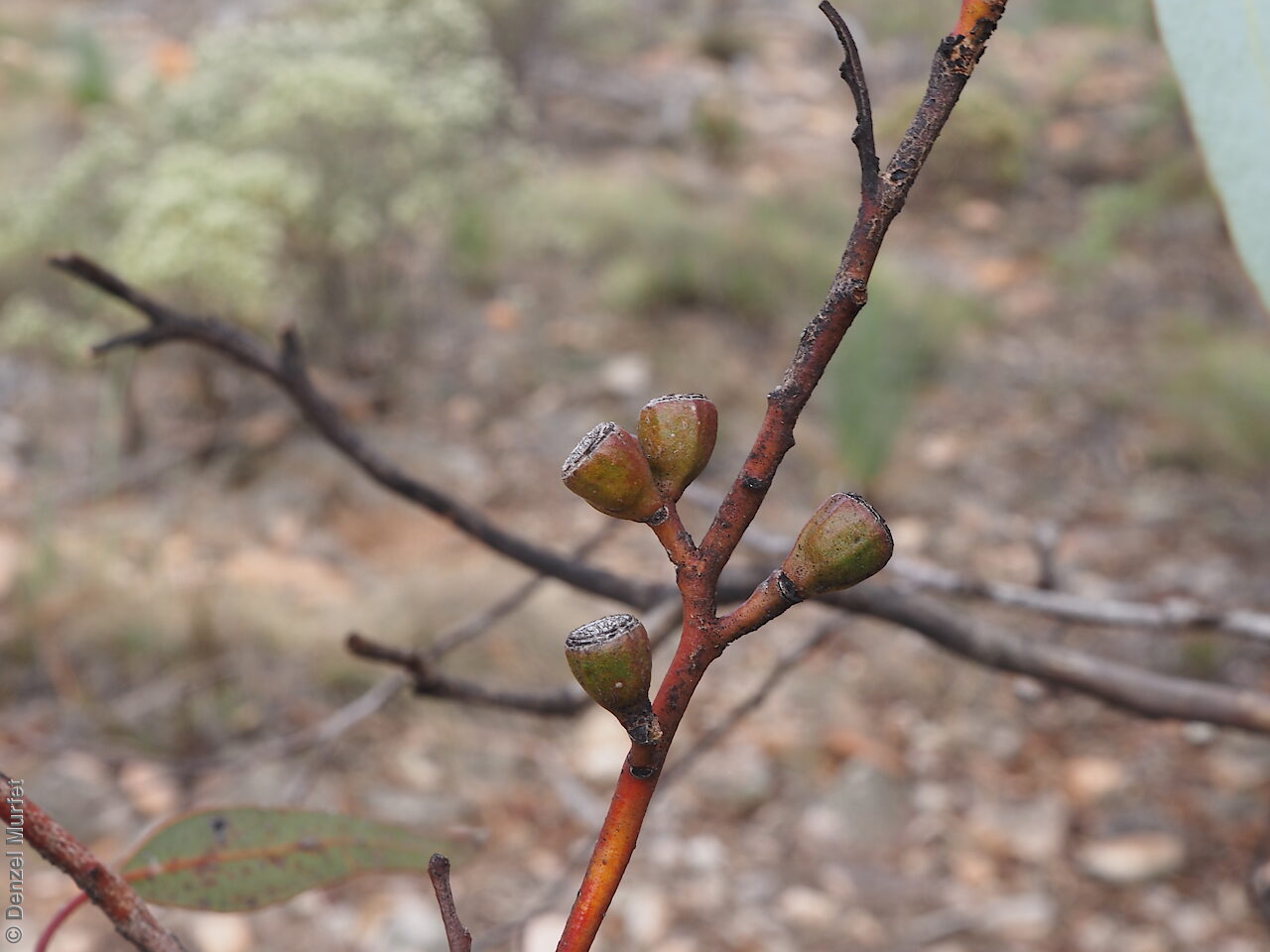

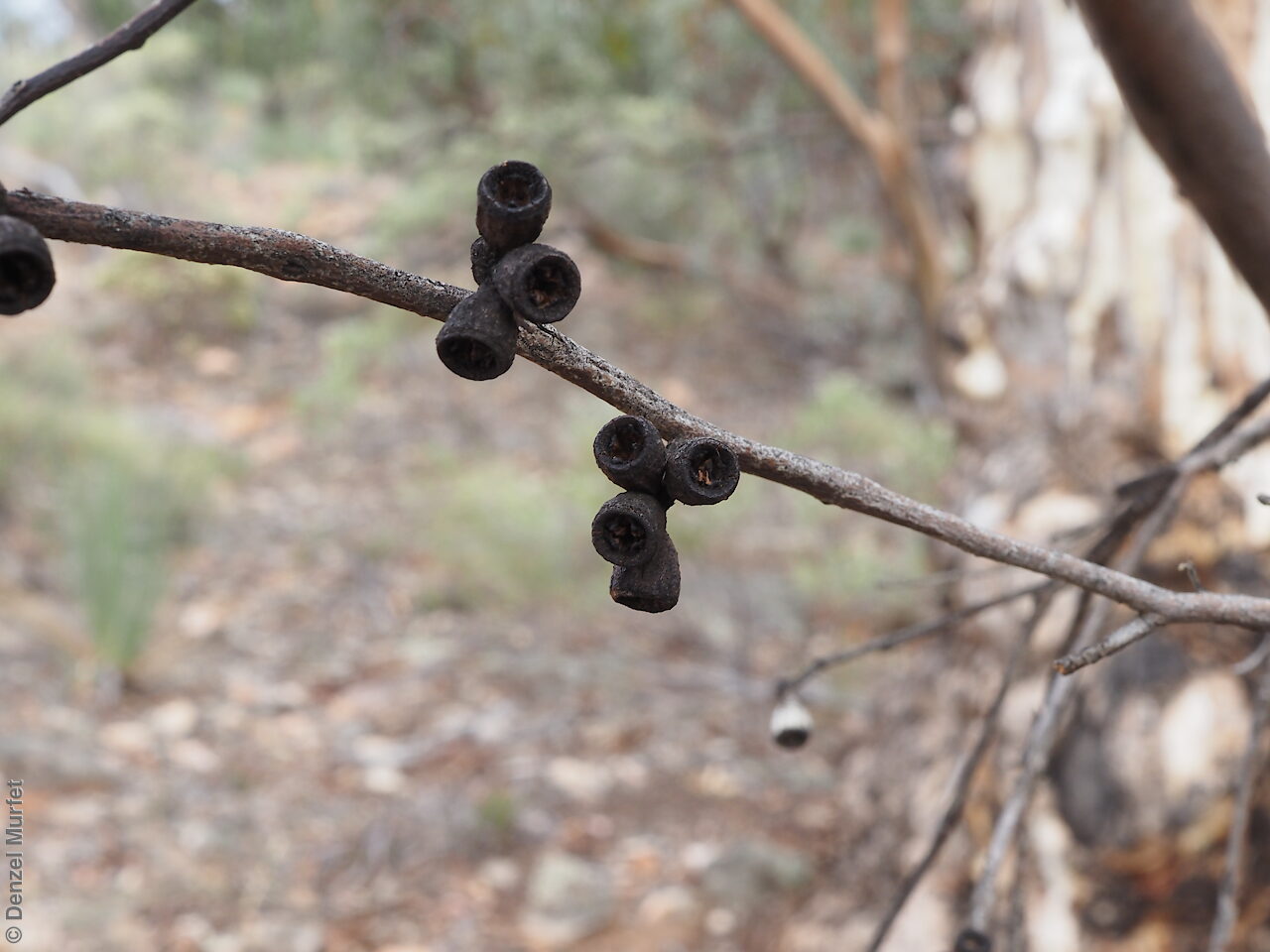
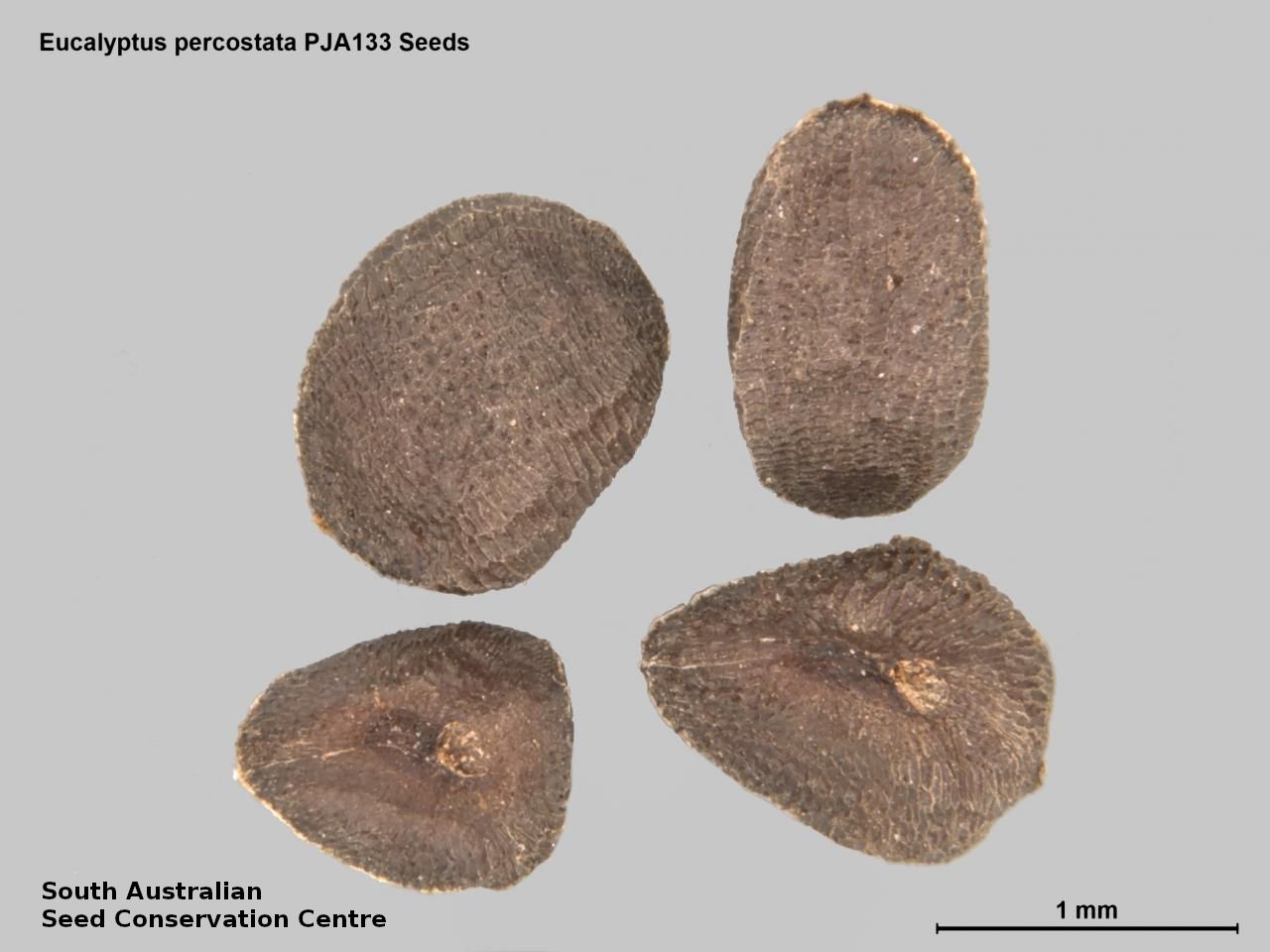


Common names
Ribbed White Mallee
Etymology
Eucalyptus from the Greek 'eu' meaning well and 'calyptos' meaning covered; alluding to the cap or lid which covers the stamens in the bud. Percostata from the Latin 'per' meaning very and 'costatus' meaning ribbed; referring to the strongly ribbed bud-caps.
Distribution and status
Endemic to South Australia and found in the southern Flinders Ranges between Quorn andn Napperby, growing on well-drained clay-loams in woodland and mallee on slopes and foot of rocky hills. Native. Rare in South Australia.
Herbarium regions: Flinders Ranges, Eyre Peninsula, Northern Lofty
AVH map: SA distribution map (external link)
Plant description
Multi-stemmed mallee to 6 m high with smooth, grey to coppery to cream bark. Juvenile leaves broad-lanceolate to ovate, dull, green to blue-green. Adult leaves to 120 mm long and 24 mm wide, lanceolate, dull, slightly blue-green to bluish. Flowers in groups of 7 in the axils of the leaves, held erect with no individual stalk. Buds to 12 mm long and 7 mm wide, bud-cap round to cone-shaped, ribbed, wider than the base. Flowers creamy-white appearing in winter. Fruits are cone-shaped to cup-shaped fruit to 9 mm long and 8 mm wide, disc descending, valves 3-5, at or just below the rim. Seeds are brown ovoid seed to 1.5 mm long and 1 mm wide, reticulated surface. Seed embryo type is folded.
Seed collection and propagation
Collect seeds between January and December. Collect mature fruits that are dark and hard (difficult to break with a finger nail), with the valves un-open any time of year. Leave the fruits in a breathable container in a dry room for one to two weeks. This allows the valves on the fruit to open and release the seeds. Separate the seeds by placing all the materials into a bucket and shaking it to dislodge the seeds. Pass the material through a sieve to separate the unwanted material. The finer material will contain both seeds (soft) and frass (hard) usually distinguishable from each other but can be very similar in shape and colour. With finer sieves, the seeds can be separated from the frass but this is not essential for storage or propagation. Store the seeds with a desiccant such as dried silica beads or dry rice, in an air tight container in a cool and dry place. From one collection, the seed viability was average, at 60%. Seeds are non-dormant, viable seed should germinate readily.
| Location | No. of seeds (weight grams) | Number of plants | Date collected | Collection number Collection location | Date stored | % Viability | Storage temperature |
|---|---|---|---|---|---|---|---|
| BGA MSB | 17,400 (11.32 g) 10,900 (5.25 g) | 20+ | 5-Jun-2006 | PJA133 Flinders Ranges | 1-Aug-2007 | 60% | -18°C |
| BGA | 9,750 (3.61 g) | 25+ | 9-Dec-2011 | KHB647 Flinders Ranges | 1-Nov-2012 | 90% | -18°C |
Number of plants: This is the number of plants from which the seeds were collected.
Collection location: The Herbarium of South Australia's region name.
% Viability: Percentage of filled healthy seeds determined by a cut test or x-ray.